Run efficiently to lower the energy cost of running

In our book (www.thesecretofrunning.com) we have discussed the Energy Cost of Running (ECOR) in several separate chapters.
First, we have shown that on a level and hard course, the ECOR is typically 0.98 kJ/kg/km. Of course, this number will not be the same for everyone: it depends on your body posture and your running style. Generally, it is believed that the ECOR of highly efficient elite runners could be as low as 0.90 kJ/kg/km, whereas the ECOR of inefficient joggers could be as high as 1.10 kJ/kg/km. So far, we have seen that our own data and those of many other runners are quite close to 1.00 kJ/kg/km.
Obviously, a lower ECOR means that you are running more efficiently and consequently you can run faster. So every runner should try to lower his ECOR!
Unfortunately, we cannot change our body posture (apart from shedding excess body fat). The Kenyan elite runners share many advantages like slim calves and (relatively) long legs.
However, we can try to optimize our running style in order to lower our ECOR. The Stryd gives us the tool to do this as can calculate our ECOR on a daily basis:
ECOR (in kJ/kg/km) = Specific power (in Watt/kg) divided by the speed (in m/s)
This means that every day we can try to optimize our running style and see the impact on our ECOR. We suggest that you note the ECOR-value every day in your running spreadsheet. Now you need to collect a lot of data and relate the values of ECOR with your running form, so cadence, GCT, oscillation, stride length, etc. Remember that the conditions of the run (weather, footing) may also have an impact. Therefore we recommend that you collect data regularly at a standard training course to get reproducible results. This should enable you to recognize the conditions in which you are able to run most economically, i.e. with the lowest value of ECOR.
An experiment to run more efficiently
Author Hans has performed such an experiment. He did this during his daily training run of 12.2 km on a standard level, asphalt paved course. After warming up for 2 km, he changed his cadence every km to gather data on the impact of cadence on his ECOR. He tried to maintain his pace at a little below 5 minutes/km, which means that when he increased his cadence automatically his stride length and vertical oscillation were reduced. The results of the experiments are presented in the table below:
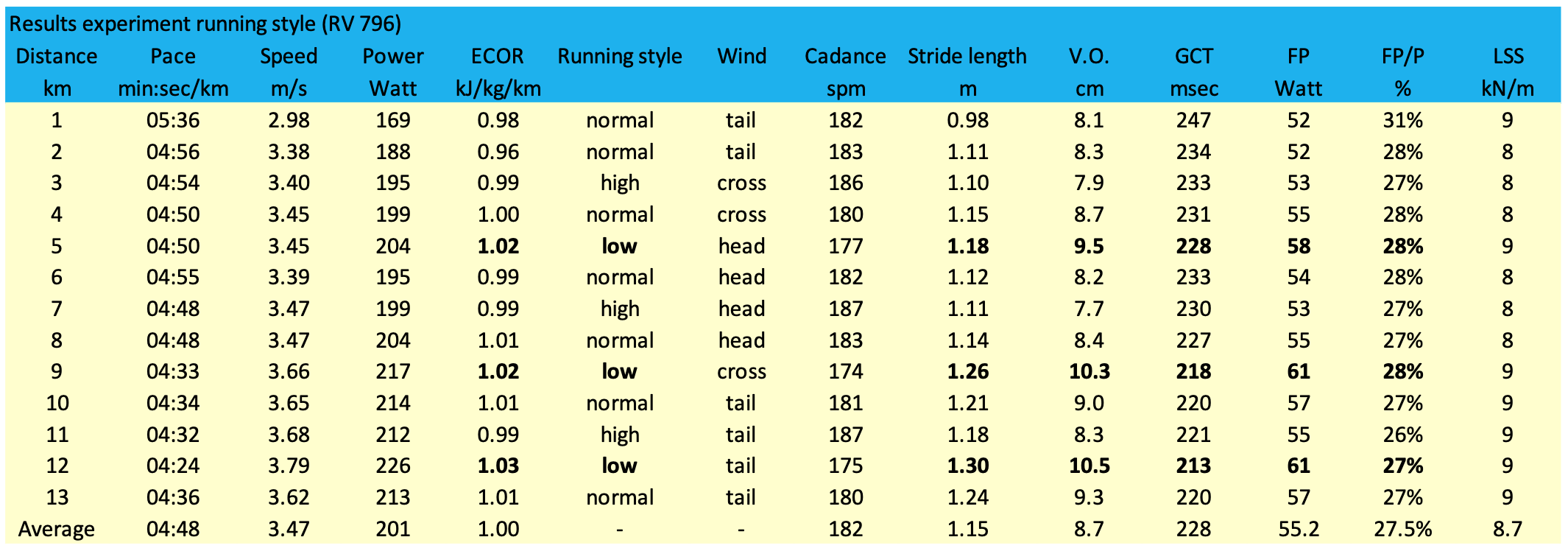
The table shows already a clear relationship between cadence and ECOR:
1. At a low cadence the ECOR increases significantly. This is clearly related to a similar increase in stride length, vertical oscillation and FP.
2. At a high cadence the reverse can be seen. The ECOR is lower, the same applies to the stride length, vertical oscillation and FP.
We have prepared the below graphs that show these relationships even more clearly.
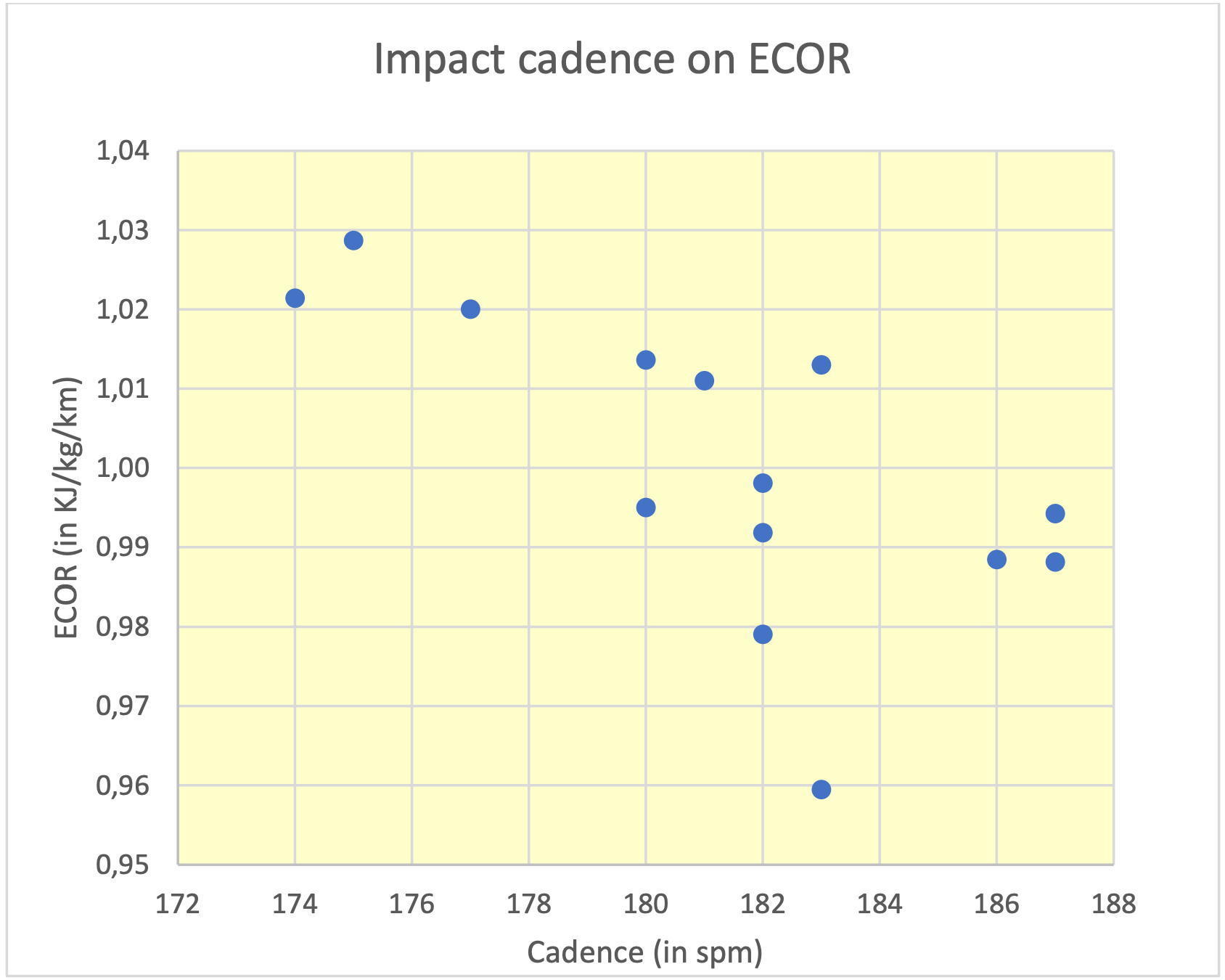
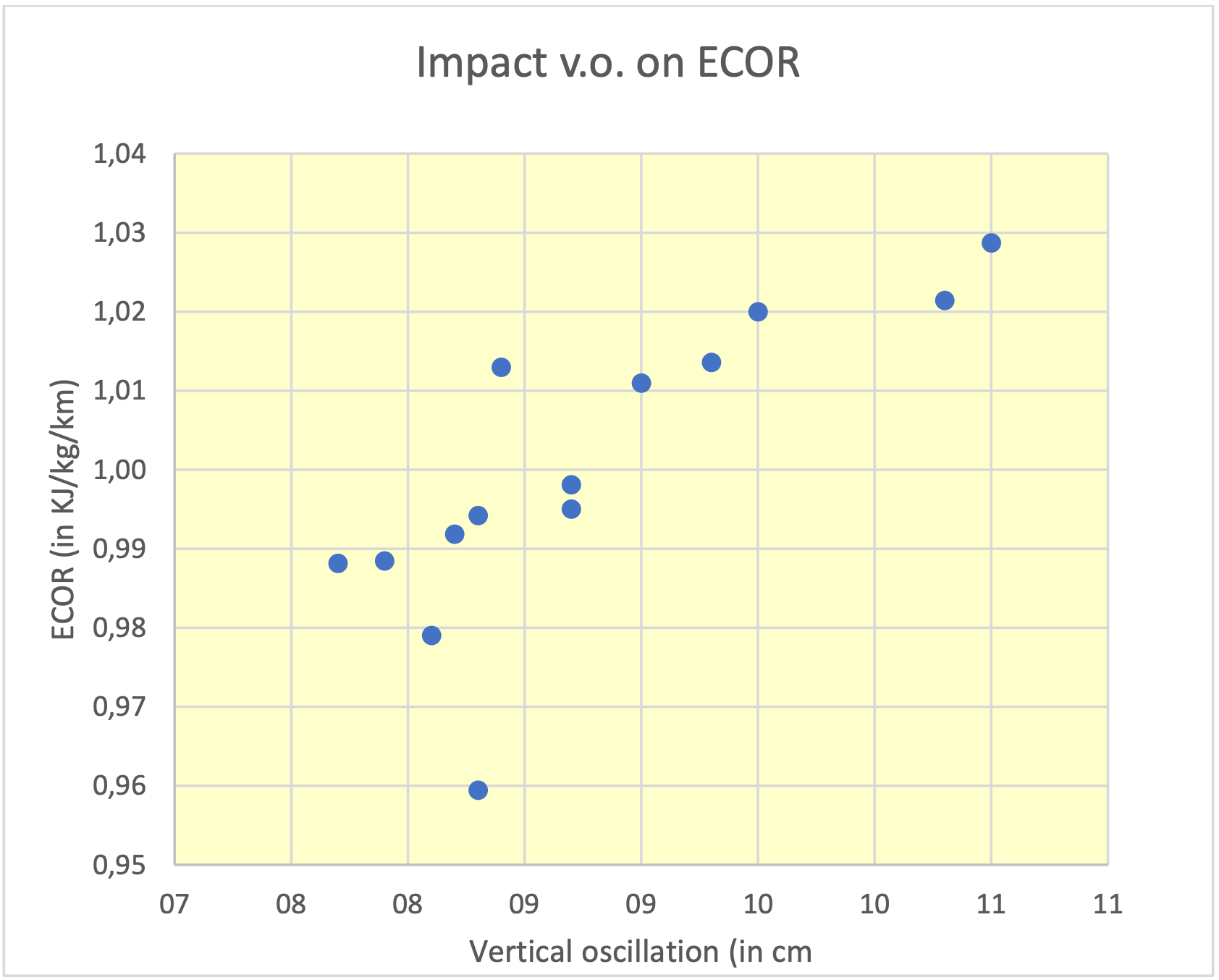
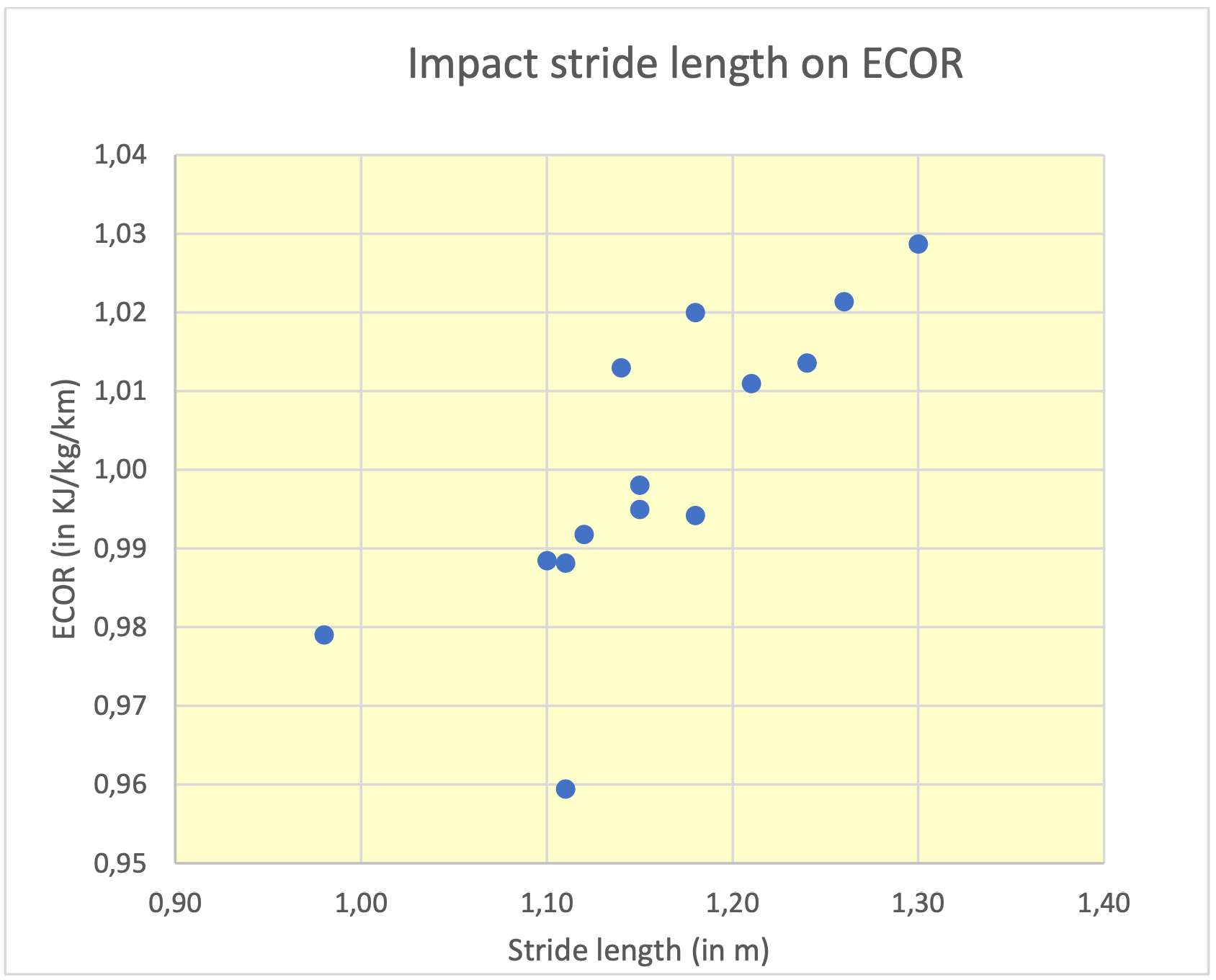
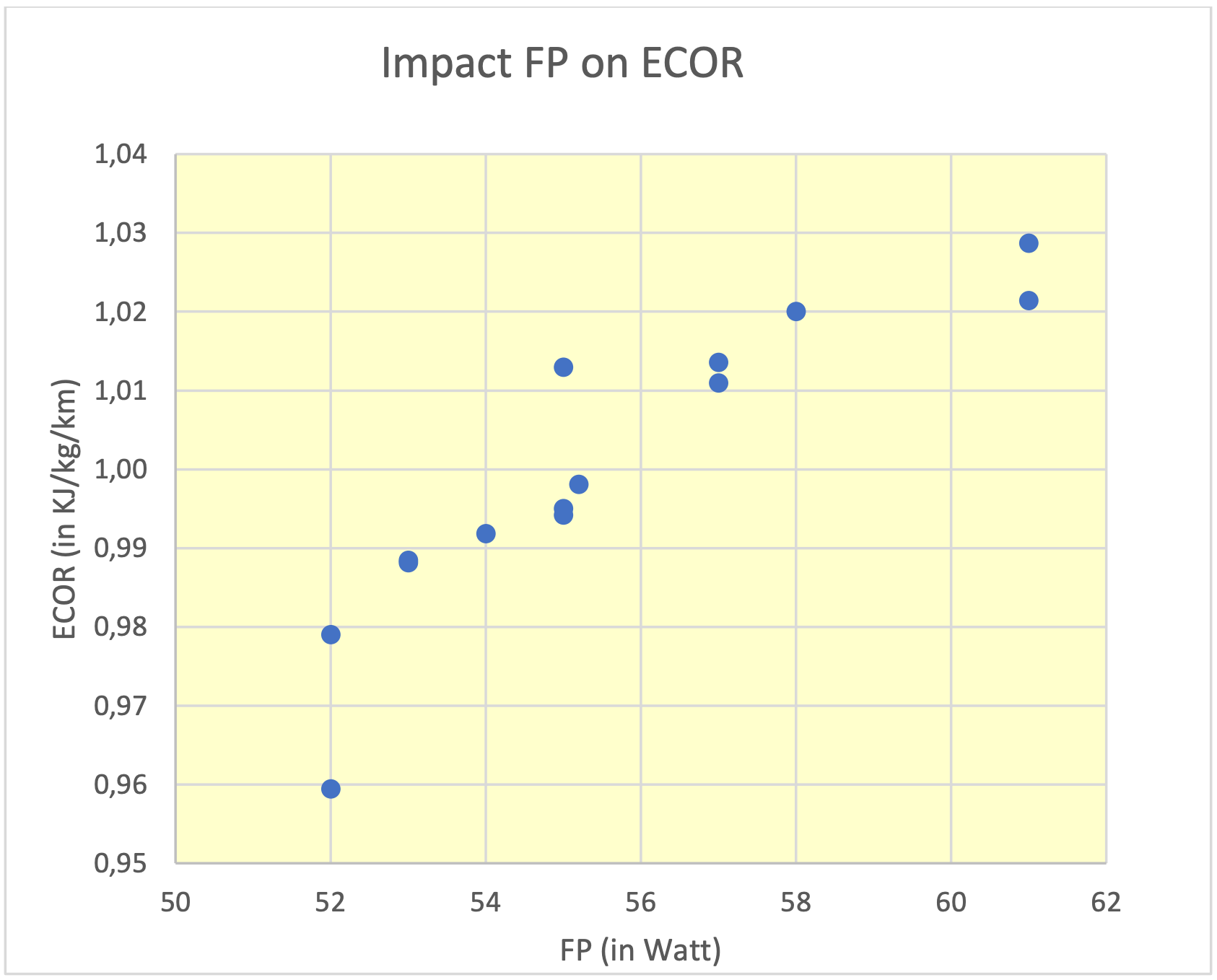
Discussion and conclusions
The experiment has revealed a clear and exciting result: the ECOR depends significantly on running style and in particular on cadence, stride length and vertical oscillation! Apparently, author Hans can reduce his ECOR from 1.03 to 0.98 kJ/kg/km by increasing his cadence. Potentially, this reduction by 5% means that with the same power he could run 5% faster!
Of course, there are still a number of buts…
First, this is just one experiment, so it needs to be verified by other experiments. We will certainly do this, and we hope other Stryders will follow our example. Second, we do not know yet to what extent these results depend on the running style of Hans. Other runners may get different results. Third, the results have been obtained during a training run at lower than race speed. So, we still need to see whether the positive impact of a higher cadence will also occur during a race. Nevertheless, Hans will try to run his next race at a higher cadence!
In spite of these limitations, we are very excited that the Stryd provides us with an opportunity to determine our ECOR on a daily basis so we can try to optimize our running style. We are sure that this will pave the way to concrete improvements in our ECOR and race results. We realize that this will not be easy because for us -and for most people- the running form has been habituated in many years of running. We will not be able to change it overnight. But with time and concrete data, we are confident we will be able to get some improvement. We hope that many readers will join us in this effort. Let’s share our data and conclusions on how we can measure and improve our ECOR! We are curious to the reactions and experiences of the readers, we welcome you to share these at www.thesecretofrunning.com.
If you would like to purchase The Secret of Running (or the German version, Das Geheimnis des Laufens), you can do so at the bottom of store.stryd.com.

